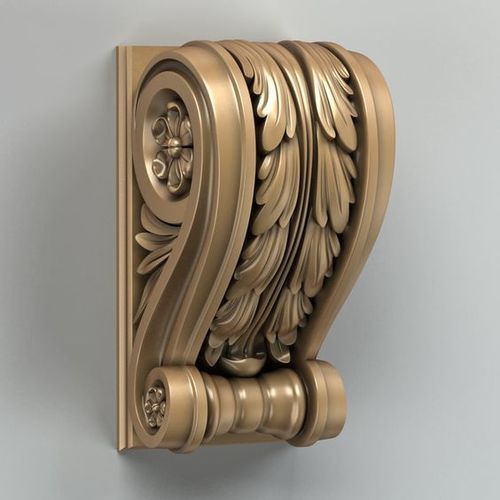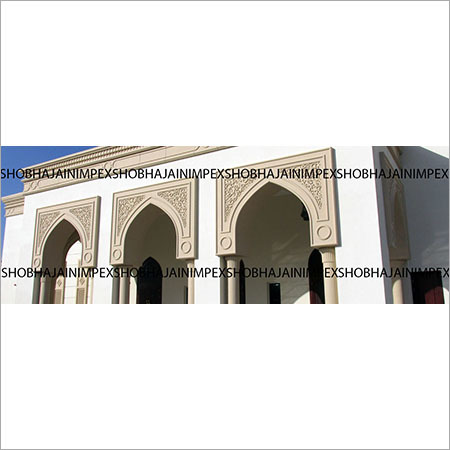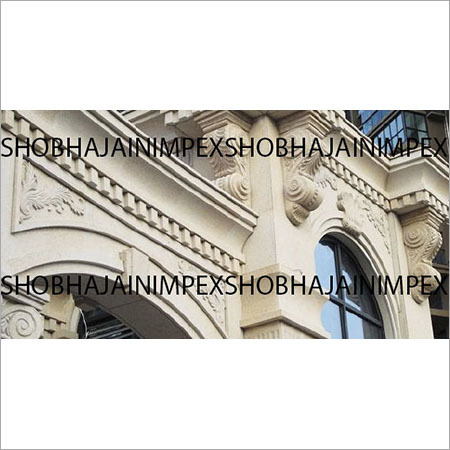About GRC Cornice
A "GRC cornice" typically refers to a cornice made from Glass Reinforced Concrete (GRC) or Glass Fiber Reinforced Concrete (GFRC). Cornices are decorative architectural elements often found on the exterior of buildings, typically near the roofline or as part of the facade design. They serve both aesthetic and functional purposes, adding ornamentation to a building while also helping to channel rainwater away from the structure.
Here's some information about GRC cornices:
1. Material: GRC, or GFRC, is a composite material made of a combination of cement, glass fibers, aggregates, and other additives. It is known for its lightweight properties, which make it easier to handle and install compared to traditional concrete.
2. Appearance: GRC cornices can be designed to mimic the appearance of traditional stone or concrete cornices, but they are generally much lighter. They can be molded into various shapes and designs, allowing for a wide range of architectural styles and decorative elements.
3. Durability: GRC is known for its durability and resistance to environmental factors such as weather, UV rays, and moisture. This makes it suitable for exterior use, where it can withstand exposure to the elements.
4. Installation: GRC cornices are relatively easy to install compared to traditional concrete or stone cornices due to their lighter weight. They can be attached to a building's facade using mechanical fasteners or adhesive.
5. Customization: GRC cornices can be customized to match the architectural style of a building. They can be molded and finished to replicate intricate details and historical designs.
6. Maintenance: GRC cornices generally require less maintenance compared to natural stone or wood cornices. Periodic cleaning and inspections may be necessary to ensure they remain in good condition.
7. Cost: While GRC cornices can be more cost-effective than traditional materials like stone or carved wood, the exact cost will depend on factors such as the complexity of the design, size, and installation requirements.
GRC cornices are just one example of how modern construction materials and techniques have evolved to provide durable and aesthetically pleasing architectural elements while also considering ease of installation and maintenance. They have become popular choices for both new construction projects and historical building renovations.
FAQ:
Q. What is GRC?
Ans: GRC stands for Glass Reinforced Concrete. It is a composite material made by combining cement, sand, glass fibers, and other additives to create a lightweight yet durable building material.
Q. What is a GRC cornice?
Ans: A GRC cornice is a decorative architectural element used in building construction. It is typically installed near the roofline or as part of the facade and is made from GRC. Cornices serve both decorative and functional purposes.
Q. Why choose GRC for cornices?
Ans: GRC is chosen for cornices because of its lightweight nature, durability, and versatility. It can be molded into various shapes and designs while remaining resistant to environmental factors like weather and moisture.
Q. What are the benefits of GRC cornices?
Ans: The benefits of GRC cornices include their lightweight construction, durability, resistance to weather and UV rays, ease of installation, and the ability to replicate intricate architectural details.
Q. Are GRC cornices suitable for both new construction and renovations?
Ans: Yes, GRC cornices are versatile and can be used in both new construction projects and historical building renovations. They allow for the replication of historical designs while providing modern durability.
Q. How are GRC cornices installed?
Ans: GRC cornices can be attached to a building's facade using mechanical fasteners or adhesive, depending on the specific design and installation requirements.
Q. Do GRC cornices require special maintenance?
Ans: While GRC cornices generally require less maintenance than traditional materials, periodic cleaning and inspections may be necessary to ensure they remain in good condition. Maintenance requirements can vary depending on the environment and location.
Q. Can GRC cornices be customized to match architectural styles?
Ans: Yes, GRC cornices are highly customizable. They can be molded and finished to replicate a wide range of architectural styles and historical designs, making them suitable for various projects.
Q. What is the cost of GRC cornices compared to traditional materials?
Ans: The cost of GRC cornices can vary depending on factors such as the complexity of the design, size, and installation requirements. However, they are often more cost-effective than traditional materials like natural stone or carved wood.
Q. Are there any design limitations with GRC cornices?
Ans: GRC cornices offer a high degree of design flexibility, but the limitations may depend on the specific manufacturer's capabilities and the complexity of the design. It's best to work with experienced professionals to achieve the desired design.










 English
English Spanish
Spanish French
French German
German Italian
Italian Chinese (Simplified)
Chinese (Simplified) Japanese
Japanese Korean
Korean Arabic
Arabic Portuguese
Portuguese Send Inquiry
Send Inquiry








